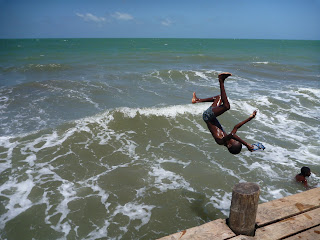Anointed in 2007 as a member of the "7 Wonders of the Modern World", Chichen Itza is one of the most famous and significant Mayan sites. Chichen Itza is located in the center of the Yucutan Penninsula and is famous for its large central pyramid known as the Castle which is actually a giant Mayan calendar. Today thousands of tourists visit each day due to its historic significance and proximity to Cancun.
The Castle was built so every facet of the building has some significance, most of which relate to the days, years, and cycle of the Mayan calendar. The serpent at the base of the Castle takes center stage twice a year, when on the equinox, a shadow comes into the view that forms the snakes body up the steps of the temple.
 |
| The main attraction, The Castle |
 |
| A serpent at the base of the main steps |
Chichen Itza's main ball court is the largest in Mesoamerica, nearly 170m long by 35m across. The game was played here around 5 times a year, with only royalty, people of prestige and power, and the familys of participants in attendance. The game was played 7 on 7, and ended after the first team scored a goal. Then winning team captain would then be decapitated by the king in hopes of a good harvest.
 |
| The enormous ball field |
 |
| One of the goals in the ball field |
Below is the Templo de los Guerreros. The top of the building in the center of the photo is a Mayan sacrificial stone where a freshly harvest heart was offered as a sacrifice. The heart was harvested at a nearby table where Mayan soldiers would hold a prisoner down and remove the heart using an obsidian knife.














































